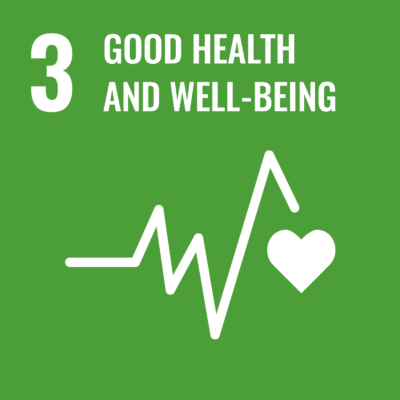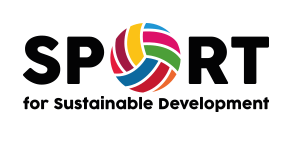
GLOBAL INTRODUCTION OF THE GOAL WITH SOME STATISTICS
The genesis of this goal comes from the great human and financial efforts that are expended around the world in order to cure diseases that turn out to be easily avoided and prevented. The objective is to reduce these diseases by establishing a prevention culture focused on the following axes: Promote healthy lifestyles, preventive measures and modern, efficient healthcare for everyone. This goal is concerned with all age categories starting by childhood deaths that have been reduced to half in the past 15 years giving hope that establishing a pertinent action plan will permit to reach the SDG3 targets. Before the global COVID-19 pandemic, major progress was made in improving the health of millions of people. Significant strides were made in increasing life expectancy and reducing some of the common killers associated with child and maternal mortality.
#Goal3 aims to ensure good health and well-being for all. The protection of this never been so important. Thank you to all the health workers, tirelessly dedicated to keeping us safe in these troubling times 💚#ClapForOurCarers pic.twitter.com/QIMZb3Lt0X
— The Global Goals (@TheGlobalGoals) April 23, 2020
Despite these achievements, today at least 400 million people have no basic healthcare, and 40 percent lack social protection. More than 1.6 billion people live in fragile settings where protracted crises, combined with weak national capacity to deliver basic health services, present a significant challenge to global health. More than one of every three women have experienced either physical or sexual violence at some point in their life resulting in both short- and long-term consequences for their physical, mental, and sexual and reproductive health. Every 2 seconds someone aged 30 to 70 years dies prematurely from noncommunicable diseases – cardiovascular disease, chronic respiratory disease, diabetes or cancer. By focusing on providing more efficient funding of health systems, improved sanitation and hygiene, and increased access to physicians, significant progress can be made in helping to save the lives of millions.
HOW CAN SPORT BE USEFUL TO REACH THE GOAL?
“Prevention is better than cure” is a famous saying associated with health and wellbeing, relatedly, sport and physical activity are found to be one of the best prevention tools for health issues. Regular physical activity of moderate intensity – such as walking, cycling, or doing sports – has significant benefits for health. Not only does it have a direct impact on physical fitness, but it also instils healthy lifestyle choices among children and young people, helping them remain active and combat non-communicable diseases. At all ages, the benefits of being physically active outweigh potential harm, for example through accidents. Some physical activity is better than doing none. By becoming more active throughout the day in relatively simple ways, people can quite easily achieve the recommended activity levels.
Indeed, the main positive impacts of sport on reducing risk of illness is related to cardiovascular diseases (1st deadliest disease in the world), diabetes (6th deadliest disease in the world), and obesity (2.8 million deaths/year). Furthermore, it has been proven that individuals can maintain long term good health conditions up to their 9th decade through adopting healthy diets, regular and adequate physical activity.
In 2004, the World Health Organization (WHO) endorsed the “Global Strategy on Diet, Physical Activity and Health” which goal and objective is to prevent non-communicable diseases that occur due to lack of healthy diets and physical activity. Among the strategy, the World Health Organization recommends:
- The development and implementation of national guidelines for health-enhancing physical activity;
- The integration of physical activity within other related policy sectors, in order to secure that policies and action plans are coherent and complementary;
- The use of mass media to raise awareness of the benefits of being physically active;
- The surveillance and monitoring of actions to promote physical activity.
Video: https://www.youtube.com/watch?v=RAfoWVy6XhM
Correspondingly, France’s National Institute of Health and Medical Research (INSERM) carried out a research in order to analyze the impact of physical activity and its place in the care and recovery protocol in the context of chronic diseases; it reported that physical activity should finally be considered as an independent whole therapy in the treatment of chronic diseases.
Sport has positive impacts not only on physical health but also on mental health and wellbeing. Evidence suggests that regular physical activity improves mental health, overall well-being and can reduce the risk of depression, anxiety, cognitive decline and delay the onset of dementia. Being physically active presents an accessible, cost effective and impactful preventive approach to strengthen and improve the mental health of young people. Organised sport and physical activity in groups have the potential to provide a space for young people to socially connect with others and experience positive emotions and a sense of belonging. It can also provide an environment where young people can escape from aspects of their life they find difficult, and feel comfortable to reflect on their difficulties. Participation in sport activities can enhance mental health and well-being of young people with fewer opportunities backgrounds, especially when coaches are well-prepared to provide them appropriate mentorship and support.
To learn more about the benefits of physical activity for mental health read the position paper of ENGSO Youth here.
Examples
The World Health Organization (WHO) launched campaigns on social media platforms in order to encourage people to maintain a minimum regular physical activity and notably during Covid-19 pandemic lockdown.
Move for Health Day by the World Health Organization (WHO): https://www.who.int/mediacentre/news/releases/2003/pr15/en/
Video: https://www.youtube.com/watch?v=lEl2PuvSnQ0
Global Action Plan on Health and Physical Activity 2018-2030 by the World Health Organization (WHO): https://www.who.int/news-room/initiatives/gappa
Video: https://www.youtube.com/watch?v=uZX14W4rVCU
European Week of Sport (EWoS)
The European Week of Sport aims to promote sport and physical activity across Europe. The Week is for everyone, regardless of age, background or fitness level. With a focus on grassroots initiatives, it will inspire Europeans to #BeActive on a regular basis and create opportunities in peoples’ everyday lives to exercise more. Website: https://ec.europa.eu/sport/week_en
Video: https://www.youtube.com/watch?v=07-wisK5mgI&list=PLJmEREKFYU8XIURXesu2BsgpVY6j6xUvc
Video: https://www.youtube.com/watch?v=vD3Q9NJANbk&list=PLfzCRxhJO75Cy19Xd7tSEn_wyDkLmEScy



